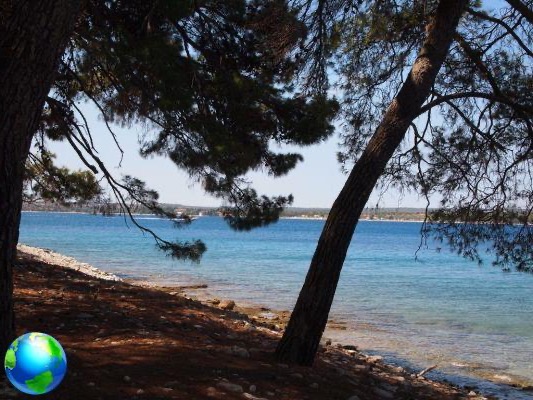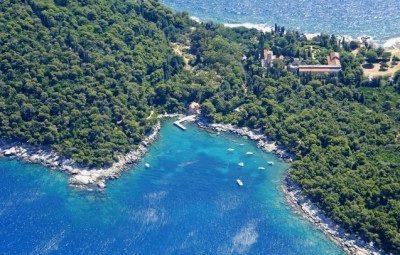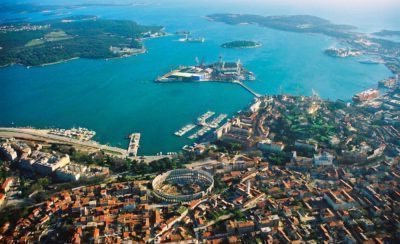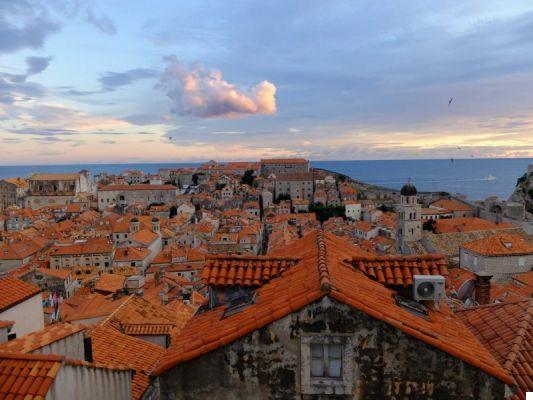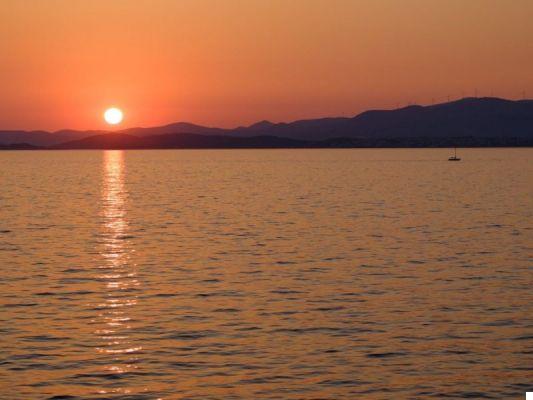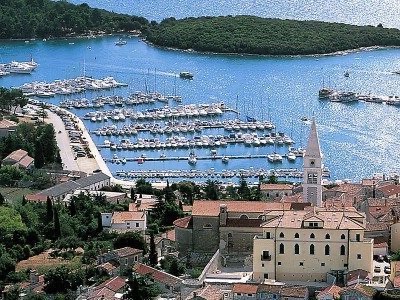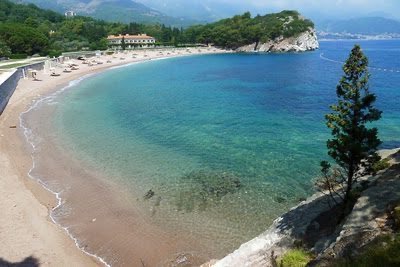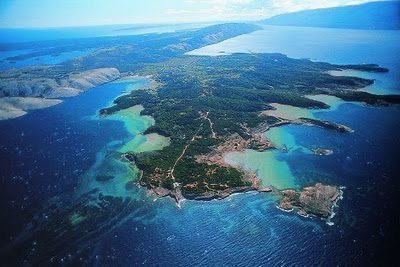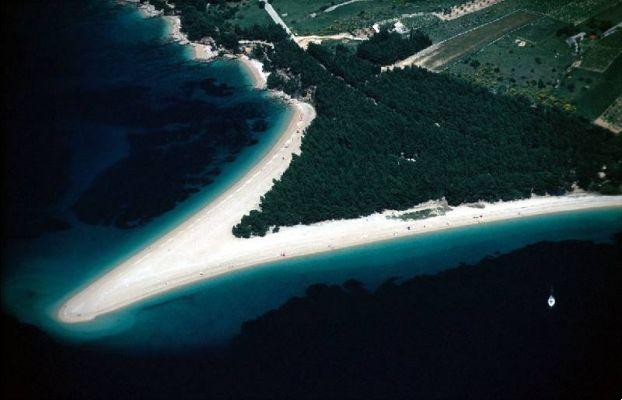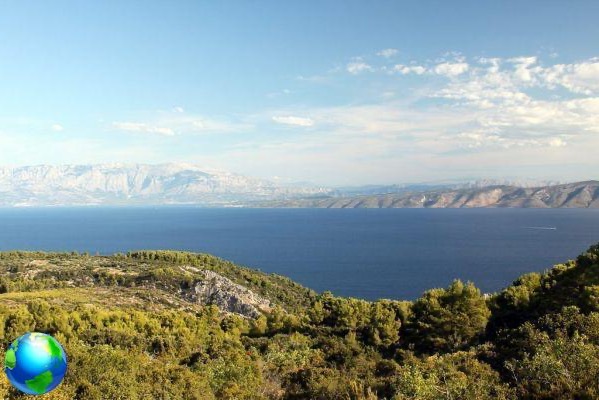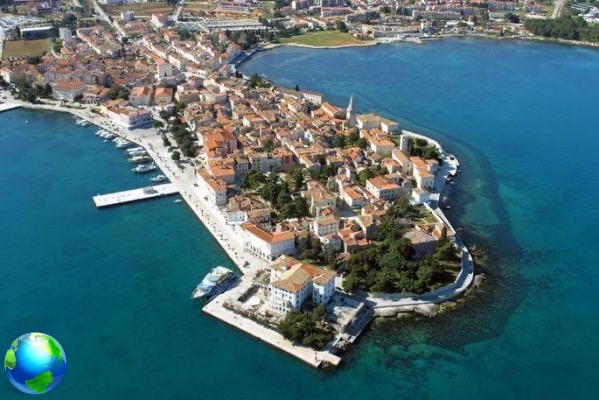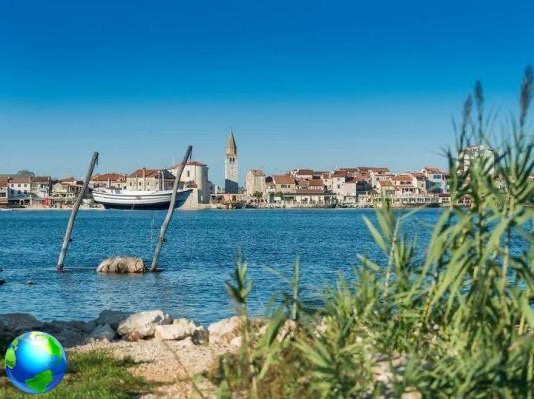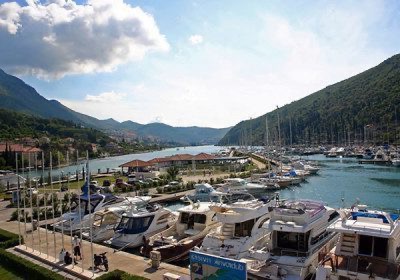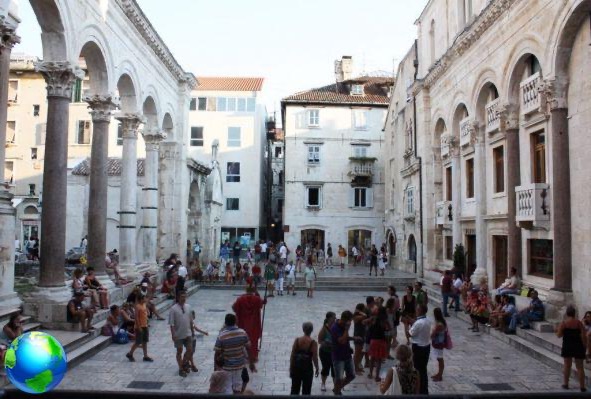Low cost tips for Trogir in Dalmatia, how to get there from Split, by boat or bus, what to visit in its historic center and why you shouldn't miss the city of Trogir during a trip to Croatia.
La Dalmatia reserves many unexpected corners, all to be discovered. And we're not just talking about dream beaches and islets, but also about Romanesque architecture and Renaissance, testimony of the past Venetian domination of the region.
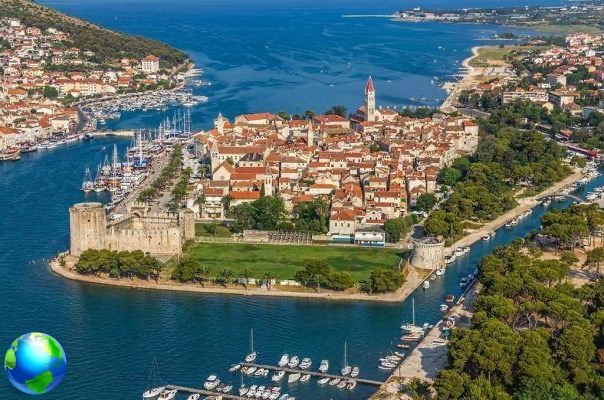
A few kilometers from the city of Split the medieval Trogir rises, a ball of streets and cobblestones enclosed by an ancient city wall, declared UNESCO World Heritage Site.
The history of Trogir is very old and dates back to the Illyrian era, but given the position and the favor it gave to trade and maritime control, it was taken by the Romans and renamed Tragurion. It is understandable that so well protected, surrounded by hills to the north and the sea to the south, the town has exercised, even in the following centuries, a certain attraction towards aspiring conquerors. In the seventh century the first Croats arrived and the Byzantines followed them, but the town, tightly packed between its mighty walls, always remained self-sufficient from the point of view of sustenance, always active, lively and dynamic from the cultural point of view.
To put it in difficulty, the Venetians had to bomb it in 1409, as it was reluctant to submit to their dominion. In short, a strong and beautiful city, which still proudly displays its vestiges today.
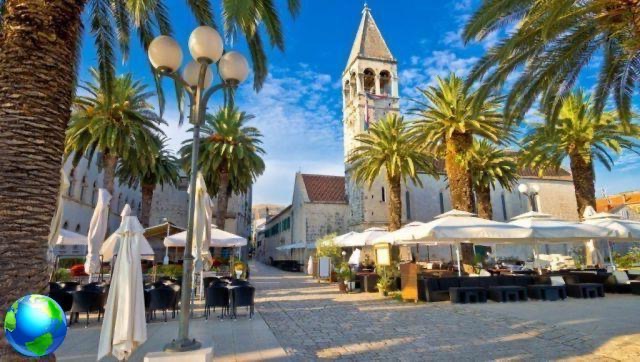
How to get to Trogir
From Split the simplest and most characteristic way to reach Trogir is by sea: they are planned 4 ferries per day (24KN) from the pier located to the right of the large Jadrolinija ferry piers.
A good alternative is the bus on two different routes: the Zadar-Split line (which stops in Trogir) or line 37, departing from Split (the bus station is in front of the pier ticket office) every 20 minutes (21 KN, ticket can be purchased by the driver) .

What to see in Trogir
The small village as a whole is worth a visit: the main attraction is in fact the the nature of the town itself which can be visited with a walk in the course of a day. On the way, you will come across several XNUMXth and XNUMXth century buildings here and there that have miraculously remained intact.
La Town Hall Square is the heart of the village, as well as the nucleus of the most interesting buildings: the Cathedral of San Lorenzo, from the Venetian era, considered one of the architectural wonders of southern Croatia, with its baptistery and bell tower (admission 25KN). The Town Hall stands on the opposite side of the square and is a perfectly preserved example of a XNUMXth century municipal building, a broletto with a Gothic-style portico, decorated with heraldic coats of arms, an imposing staircase and the central well headed by the winged lion of St. Mark.
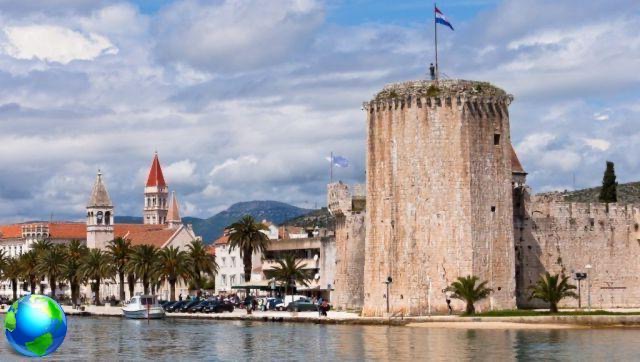
As in the most classic medieval systems, power displayed itself in the heart of the town, the religious one on one side, the civic one on the other. Between the two, in the case of Trogir, the local power also rose, that of the rich family who built Cipiko Palace, in Venetian Gothic style, on the remains of a previous Romanesque structure.
Finally, overlooking the sea, the so-called deserves attention Camerlengo Castle (admission 20KN), built at the behest of the French Marshal Marmont, during the Napoleonic occupation of Dalmatia.
At the end of the path you are therefore on the line of the surrounding walls, or on the seafront where you can enjoy a well-deserved refreshment: the walk towards the pier is in fact dotted with bars, clubs and restaurants of all kinds and prices.




